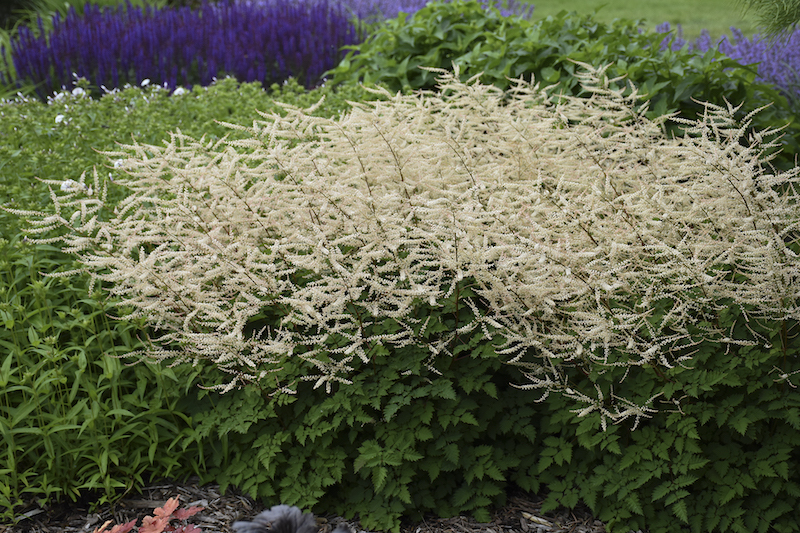Growing Goatsbeard
Goatsbeard, Aruncus dioicus, is grown for its tall showy features. Elegant plumes of creamy white flowers appear in late spring to early summer and sit above airy, finely divided foliage. This clump-forming woodland beauty is an important food source for pollinators, attracting a variety of beneficial insects, bees, and butterflies.

Goatsbeard is a low-maintenance shade perennial that is native to Europe and North America and easily grown in Hardiness Zones 3-8. Certain varieties of Goatsbeard, once mature, can grow up to 6 ft tall and wide. Goatsbeard creates vertical interest in the garden, is ideally used in shady woodland borders, and is perfect when used to screen foundations or grow along fences to visually soften the area.
Planting Goatsbeard
Goatsbeard prefers woodland growing conditions, so plant it in shade to partial shade and in moist, fertile soil. You will notice leaves becoming dry near the edges if soil moisture is inadequate and if the delicate leaves are exposed to direct sun. Make sure there is plenty of organic matter such as garden compost mixed in with existing soil to keep the plant well fed.

Watering Goatsbeard
Keep Goatsbeard consistently moist, and be mindful to check soil moisture during long periods of drought. Water Goatsbeard deeply, making sure water reaches the entire root system. This plant requires about 1 inch of water per week once established.
Fertilizing Goatsbeard
No need to fertilize Goatsbeard if it is grown in a natural woodland setting, where leaves fall from deciduous trees and naturally decompose, providing nutrients for understory plants. You can apply a light layer of garden compost, well-rotted manure, or finely shredded leaves to the base of the plant for additional nutrition and protection.
Pruning Goatsbeard
Cut back Goatsbeard foliage to just above the soil level in early spring to make way for new shoots. Goatsbeard requires a male and female plant in close proximity to produce seed. If you wish to prevent plants from multiplying via self-seeding, remove the spent flowers directly after blooming. You can opt to leave spent seed heads and foliage on plants for winter interest.
Caring For Goatsbeard in Pots
Many Goatsbeard varieties can get quite sizable, reaching heights of 6-8 ft, while some are more manageable, reaching only 3 ft. The smaller, or dwarf, varieties are easily grown in pots with additional care. Find a large enough container that will comfortably accommodate the rootball. Pot your plant in potting soil that is well draining and rich in organic matter, such as garden compost. The pot must have ample drainage holes. Place the newly potted Goatsbeard in a shady area, and check moisture levels of the soil more frequently when growing this plant in containers; the soil must be kept moist.

Winter Care for Goatsbeard
Goatsbeard is hardy down to Zone 3 so it's well adapted to tolerate cold winters. Mulching around the base of the plant by adding a few inches of organic mulch will help to insulate the roots and add a layer of protection from the cold.
 |
Author Chris Link - Published 03-15-2023 |
